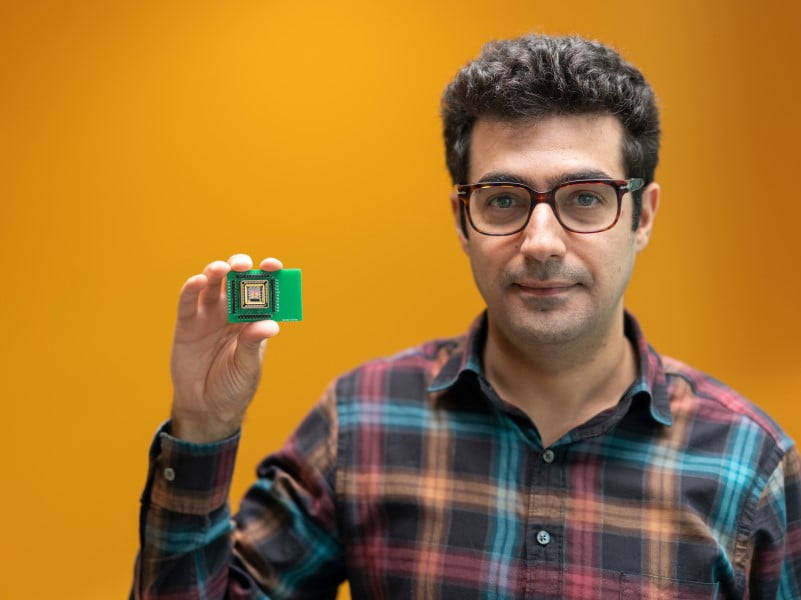A university research collaboration between Australia and the United Kingdom has successfully completed a proof of concept that brings the production of screens 100 times thinner than existing technologies closer to reality.
Researchers at the Australian National University, UNSW Canberra, and Nottingham Trent University developed a nanoparticle metasurface with pixels that can be electrically tuned rapidly, enabling visible and near-visible light to be displayed at a high resolution.
However, first author and ANU PhD scholar Khosro Zangeneh Kamali said “inventing an effective way to control [metasurfaces] is still the subject of heavy research”.
Metasurfaces are two-dimensional arrays of nanoparticles that have “extraordinary light-scattering properties”, according to the paper.
Using a silicon-based metasurface, the researchers adjusted the material’s temperature to an operational temperature of around 200 degrees Celsius. This caused the optical behaviour of the metasurface to switch almost 10 faster than the human eye can detect and faster than video frame rates.
The paper states that the performance of the silicon metasurface makes its the “first integrable metasurface within cutting-edge gadgets… such as flat displays, virtual reality dynamic holography, or light detection and ranging (LIDAR)”.

Professor Andrey Miroshnichenko, the single UNSW Canberra researcher on the team, said that by building the metasurface out of silicon, it would have “a long-life span in contrast with organic materials required for other existing alternatives”.
He also added that silicon is widely available and cheap to produce as well as being compatible with the standard fabrication process for semiconductors.
Compared to LCDs and LEDs, metasurfaces could be used in screens that are 100 times thinner, have 10 times greater resolution, and consume 50 per cent less energy. The energy savings are made because metasurfaces do not require the use of polarised light.
Use-cases have historically been limited as the flat structure is built on nanoparticles in fixed positions making it difficult to alter its interaction with light, unlike the multi-layered LED or LCD screens which rely on liquid crystal cells.
The technology is also feasibly compatible with modern electronic displays, including personal electronic devices.
Project leader and Nottingham Trent University engineering Professor Mohsen Rahmani said the team has “paved the way to break a technology barrier by replacing the liquid crystal layer in current displays with a metasurface, enabling us to make affordable flat screens liquid crystal-free”.
“Most importantly, our new technology can lead to a huge reduction of energy consumption – this is excellent news given the number of monitors and TV sets being used in households and businesses every single day. We believe it is time for LCD and LED displays to be phased out in the same way as former cathode ray tube (CRT) TVs over the past ten to 20 years,” he said.
Australian Research Council Centre (ARC) of Excellence for Transformative Meta-Optical Systems (TMOS) director Dragomir Neshev added that “the capability of conventional displays has reached its peak and is unlikely to significantly improve in the future due to multiple limitations”.
Five of the eight researchers named in the research paper published in ‘Light: Science and Applications’ are based at the ARC Centre of Excellence for TMOS at the ANU Research School of Physics, including Australian Academy of Science President Professor Chennupati Jagadish.
The ANU Research School of Physics is known for producing innovative spin outs including LIDAR navigation technology firm Vai Photonics, since acquired by Advanced Navigation, and quantum computing firm Quantum Brilliance.







